This instructor seminar was run by Roy Dean and Josh Gold on July 15, 2017. After resoundingly positive feedback on the format, Aikido Journal decided to use the format as the basis for future Aikido Journal Academy instructor seminars.
The focus for this seminar was henka-waza for classical aikido pins. You can learn more about the design parameters and objectives for the course here.

Bowing in at the beginning of the seminar. We decided to wear no hakama since so much instruction will be focused on detailed foot and leg placement.
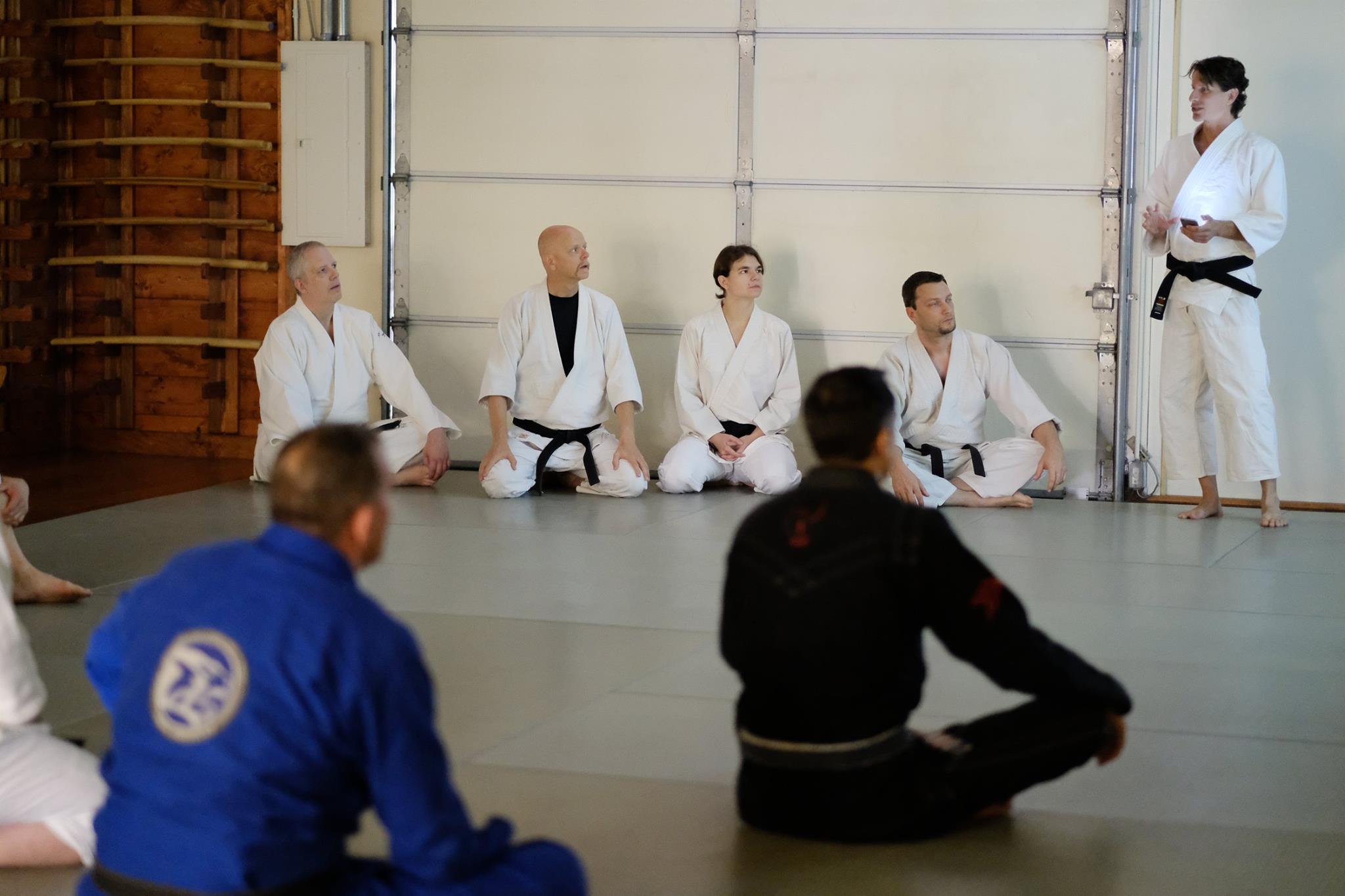
The seminar kicks off with opening remarks and a short presentation. We outline learning objectives, design parameters for the techniques and training methods, our theory / approach, and the schedule for the day. This event was paced for seasoned martial artists that were ready to be on point for an entire day.

Hso, our professional cameraman for the event. A full array of video and audio capture equipment operated by a specialist yielded a comprehensive video archive of the event.

Professor Roy Dean, getting ready to lead his first segment of the seminar.
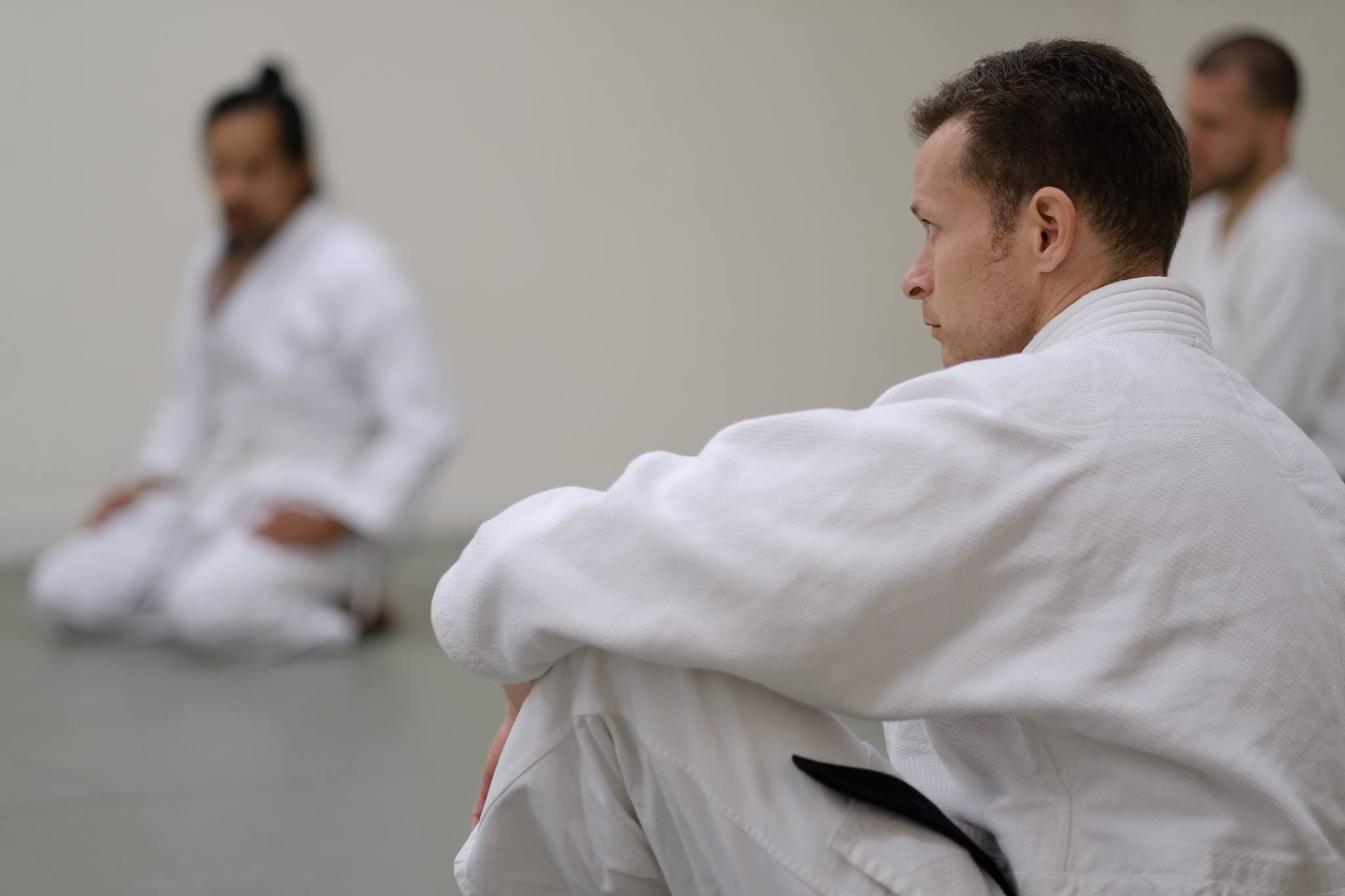
Michael Padilla Sensei, representing Orange County Aikido
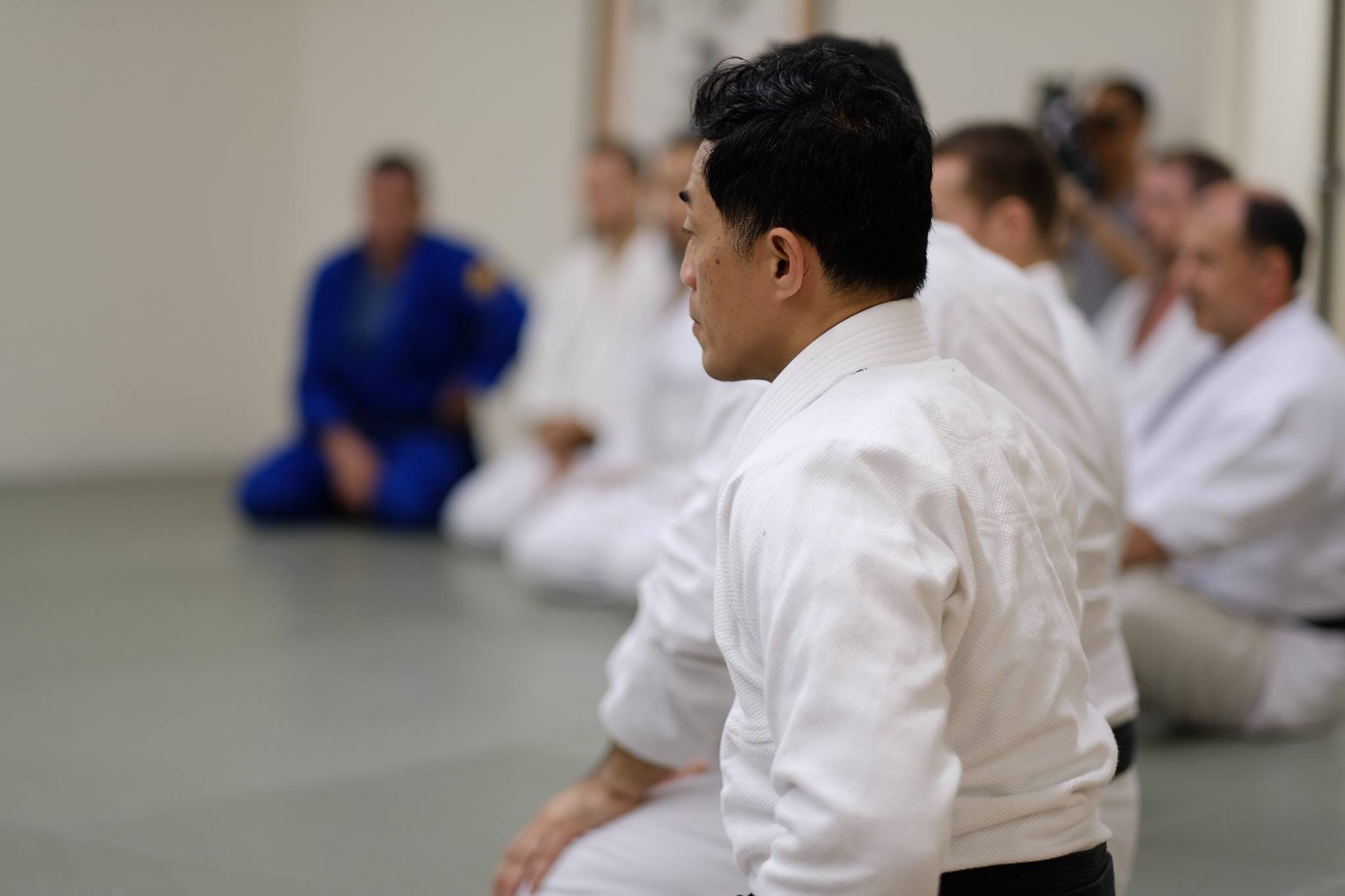
Ray Feliciano Sensei, Chief Instructor of both Maru Dojo in San Francisco and Pasedena Aikikai.
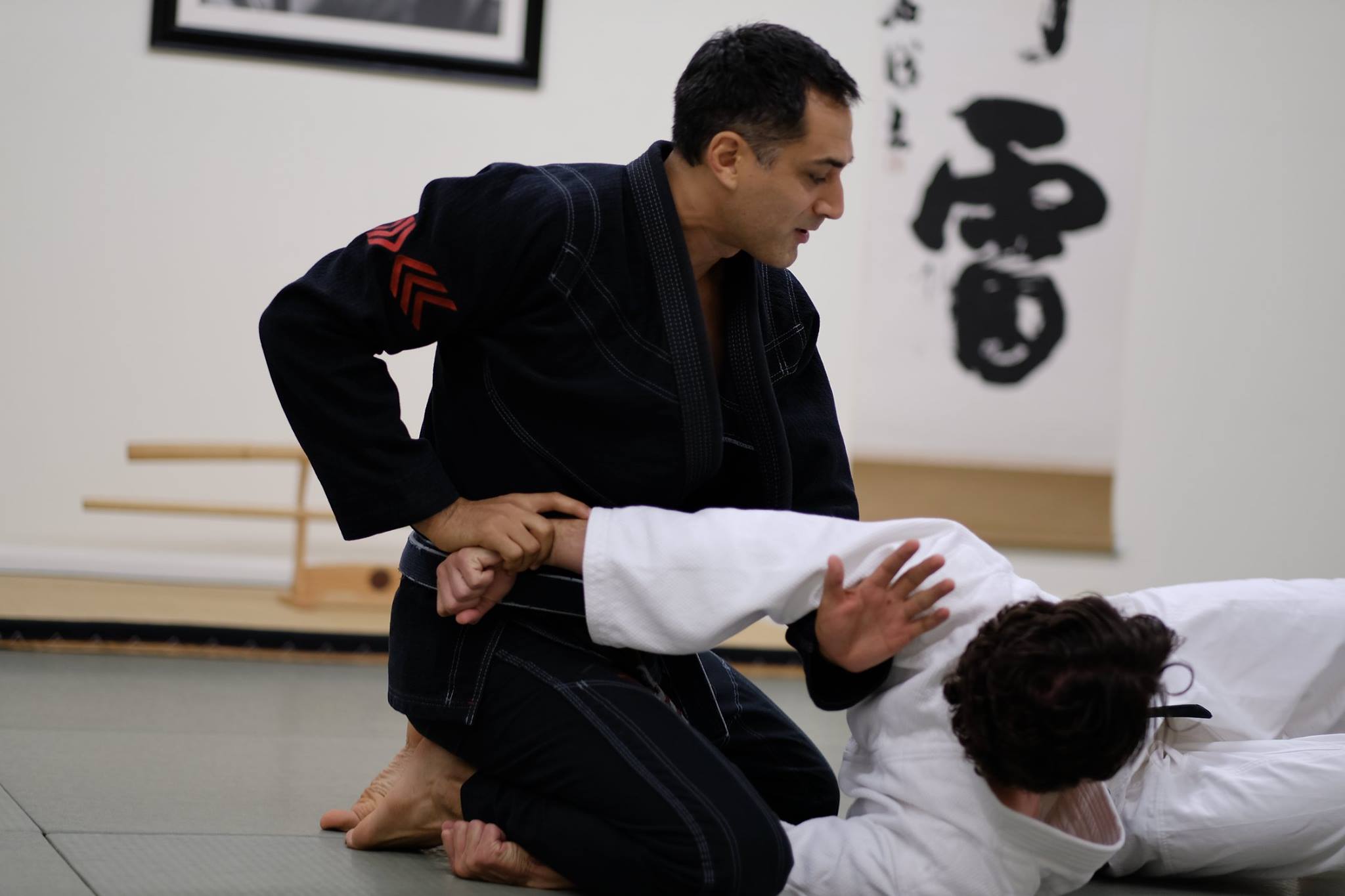
A response to a specific escape from an ikkyo pin. We ultimately didn’t include it in the curiculum but we showed it and explained why.
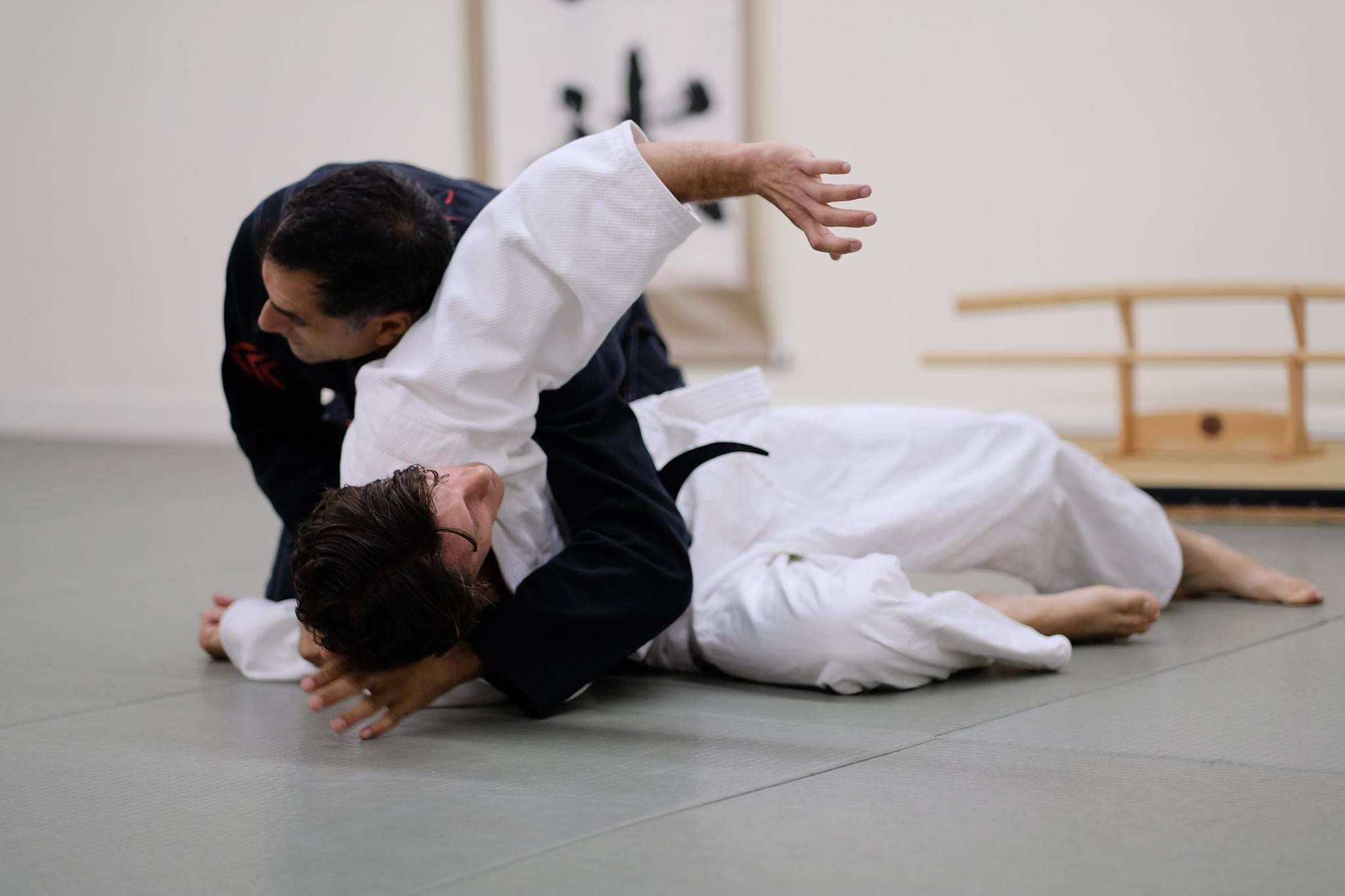
A response to an escape from a seated nikyo pin. Roy moves into a head and arm choke variation, very similar to one demonstrated by Morihei Ueshiba in the Noma Dojo photo archive.
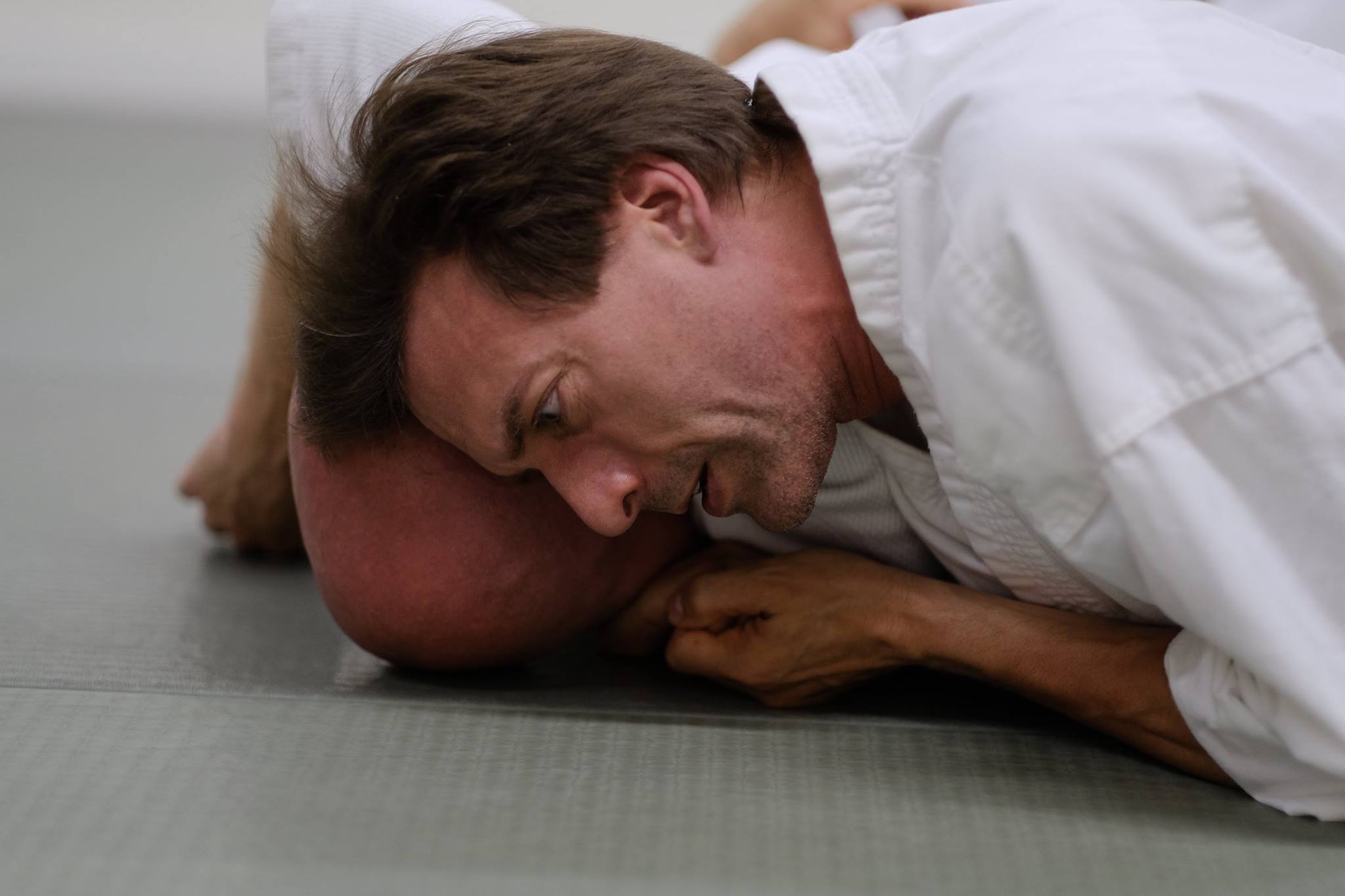
Rodney Landis from Old City Aikido, learning to replicate O-Sensei’s choke technique.

Brent Williams Sensei from the Aiki Academy in Boise, Idaho. Brent gets MVP of the day for training through the entire seminar with a broken toe – an injury he sustained just one day before the seminar.

A variation on the classical aikido kneeling posture, used to reduce an uke’s mobility and bring them back under control during resistance or an escape attempt.
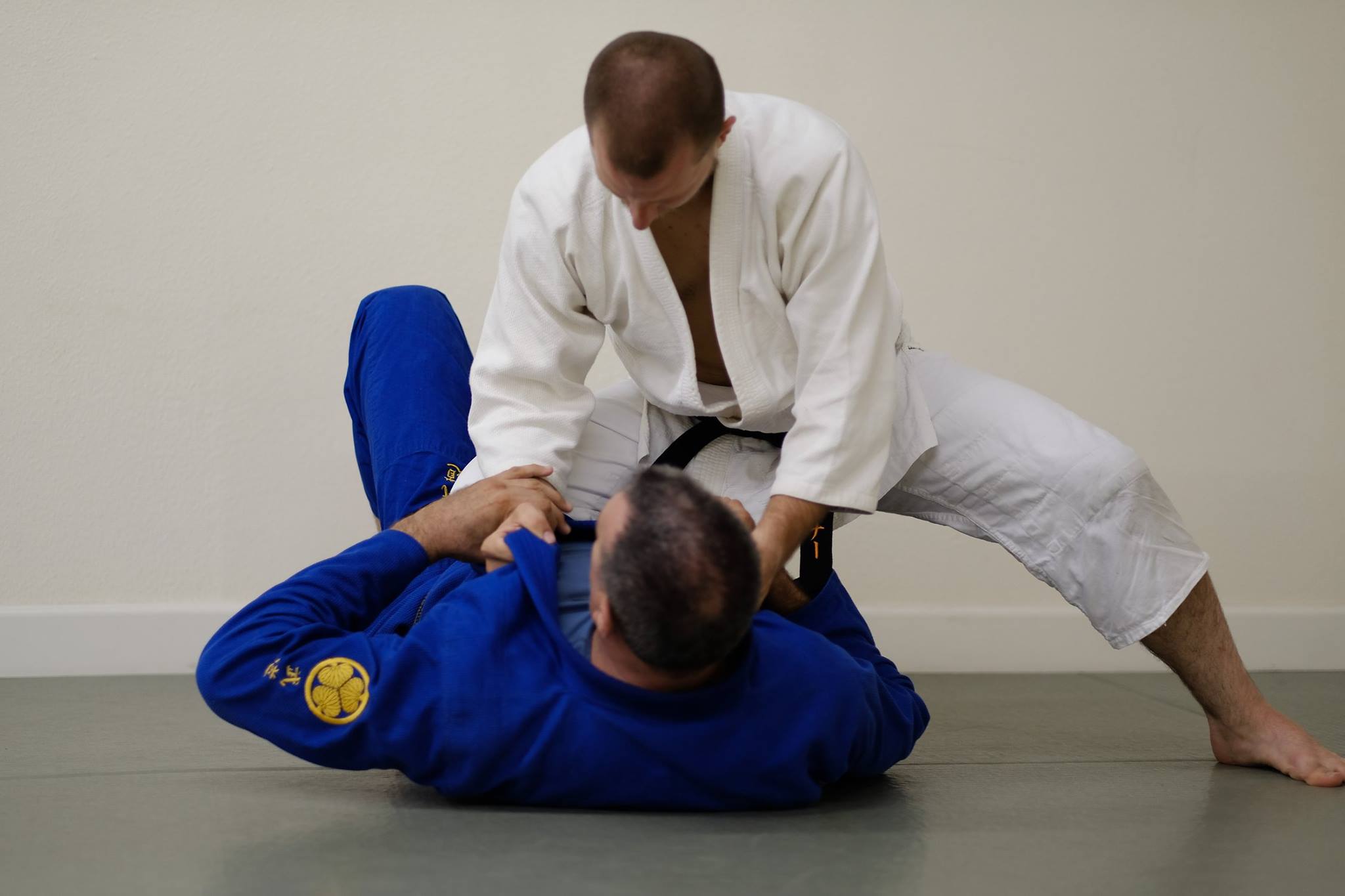
Chris Wagner Sensei from Logan Square Aikido in Chicago, practicing with Professor Raul Montolfo. We partnered Chris with Raul for the first part of the day as they have a common point in their aikido background. Chris is part of the Birankai organization (founded by Chiba Sensei) and Raul received his 3rd dan in aikido directly from Chiba Sensei. Raul is also a 2nd degree black belt in BJJ and a 2x world champion at the black belt level.
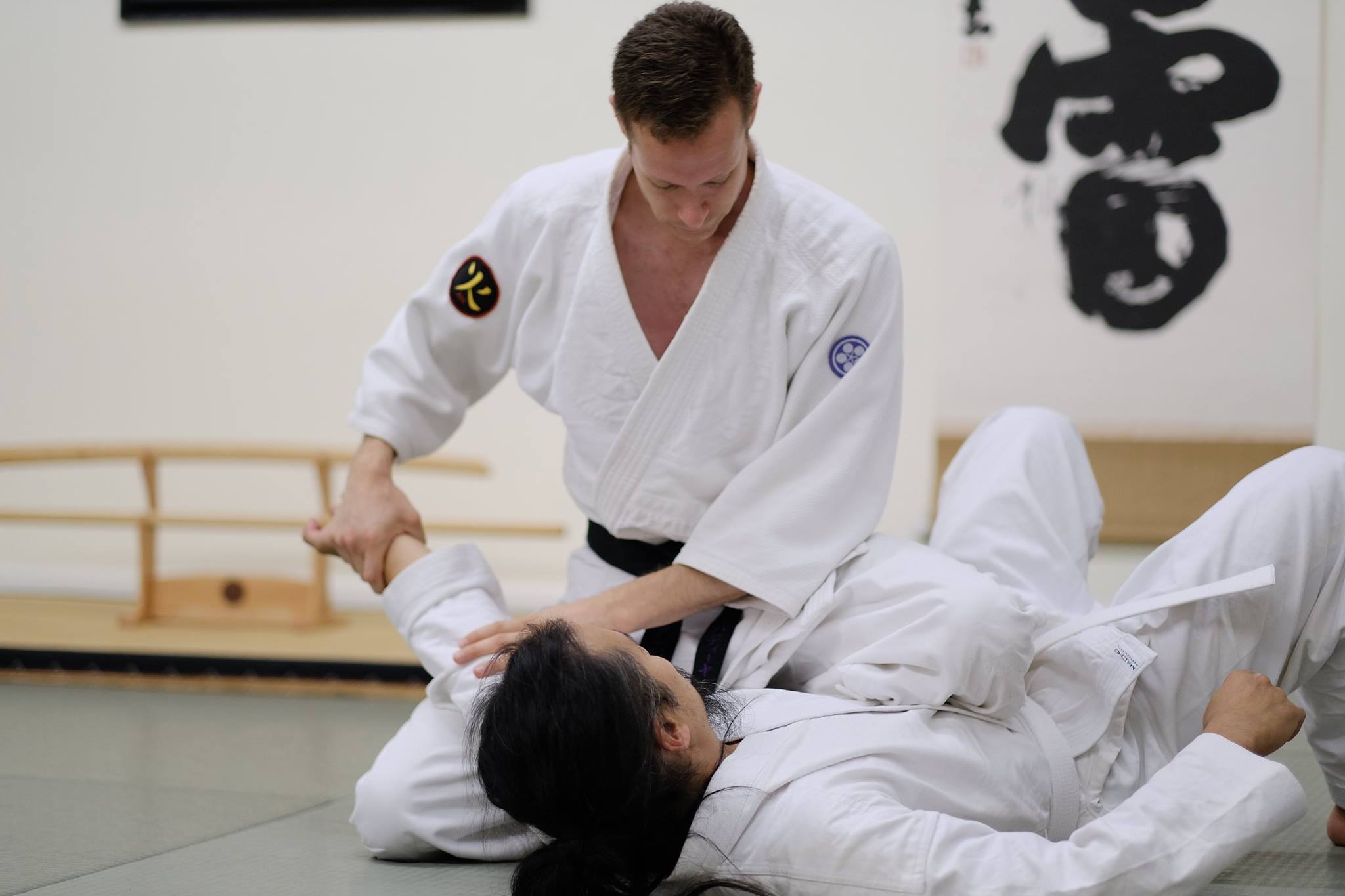
Michael practing with Sifu Mark Cheng.

Sven Thilo, an Ikazuchi Dojo instructor, training with Rodney Landis.

Jason Perna Sensei from Old City Aikido in Philidephia sharing concepts with Roy. Jason has been exploring BJJ and extensions to the aikido pining techniques and had some great insights.
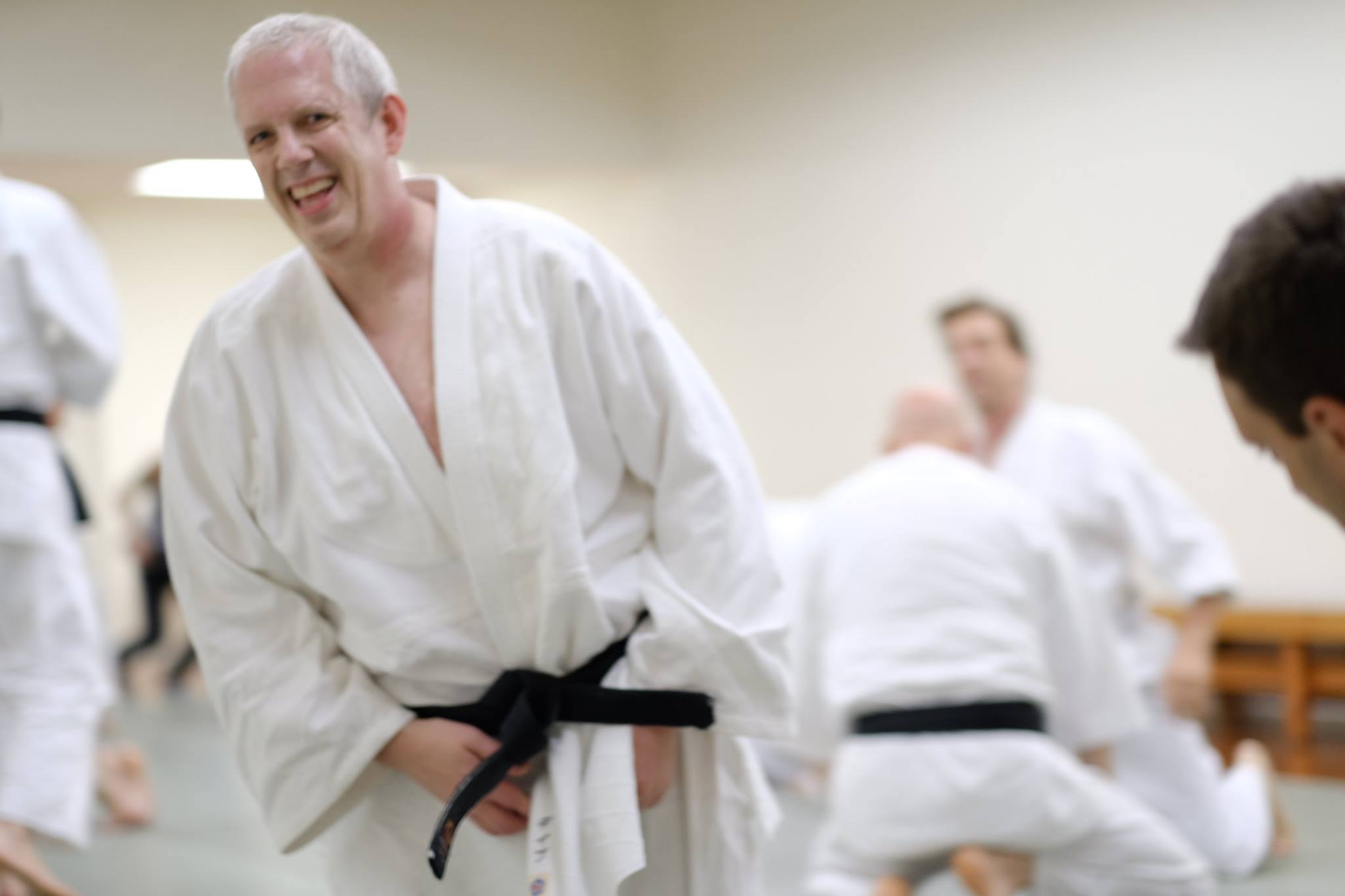
David Millar Sensei from Washington DC. A veteran aikido instructor with nearly 40 years of experience.
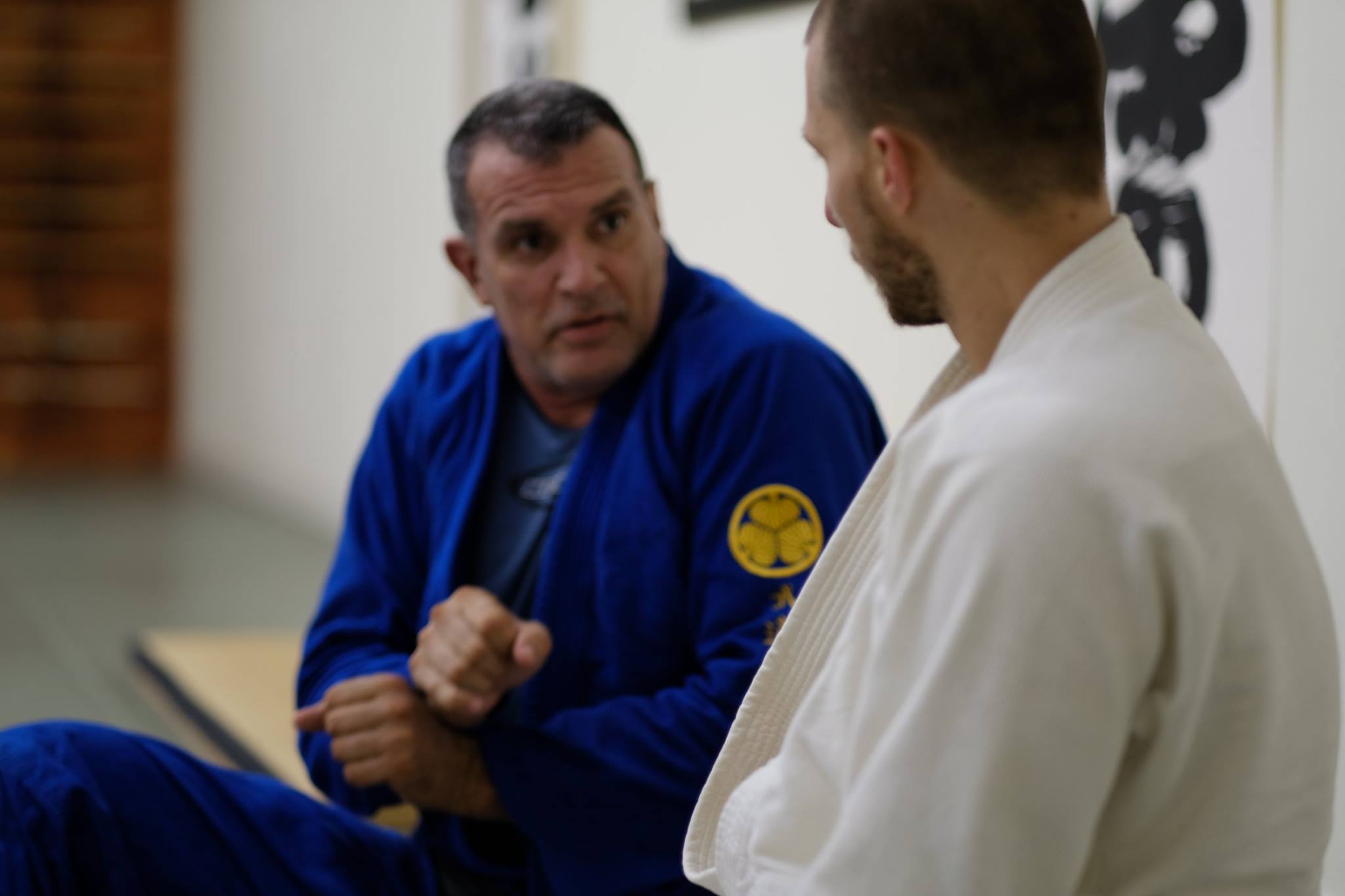
Raul sharing technical details with Chris.
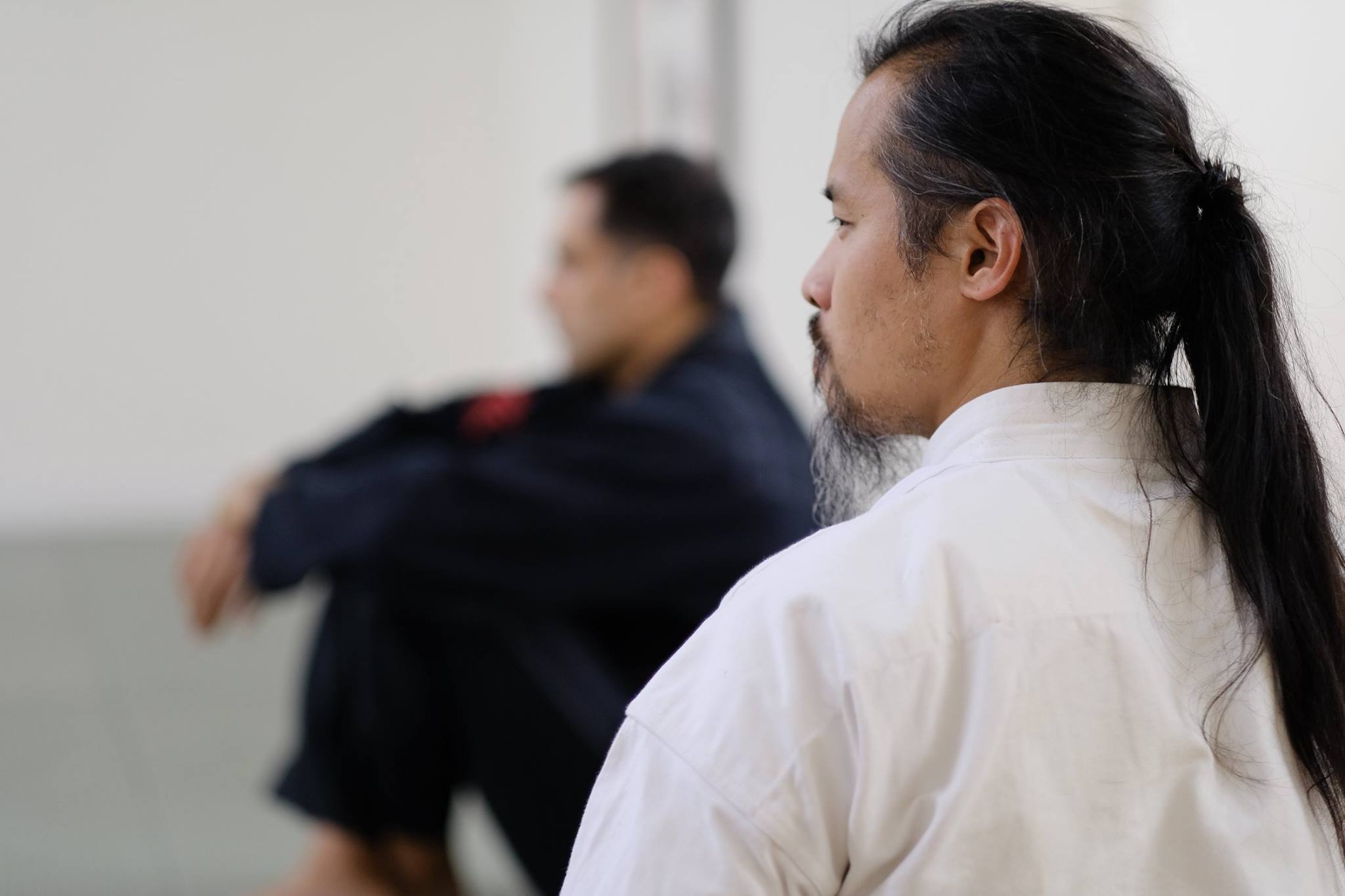
Sifu Mark Cheng. The least experienced aikido practitioner in the room, yet one of the most formidable martial artists in the group with massive depth in a range of arts.

Jason Perna demonstrating a pin variation on Josh for Nastia Shuba, an Ikazuchi Dojo instructor.

Philip Greenwood Sensei from Greenwood Aikido in Temecula, CA talking with Roy, Michael, and Josh.

Hilary Heinmetz Sensei from Torrey Pines Aikikai, talking with Josh.

Viewing a set of unreleased photos from the Noma Dojo collection over lunch. We had the oppourtunity to see O-Sensei executing a broad range of exotic pins. We decided to bring a couple of them to life by threading them into the seminar ciriculum and showing oppourtunities to apply them.

The “gift wrap.” A failsafe option if a henka-waza elbow lock technique fails when the uke bends his arm to escape the elbow pressure. A surprisingly effective and compassionate way to shut down someone’s movement options while maintaining situational awareness and mobility from a standard aikido kneeling posture.

Roy giving Ray some subtle technical insights. As a 5th dan in aikido and an experienced jiujitsu practitioner, Ray was already very fluent with many of the concepts and movements in the seminar curriculum.
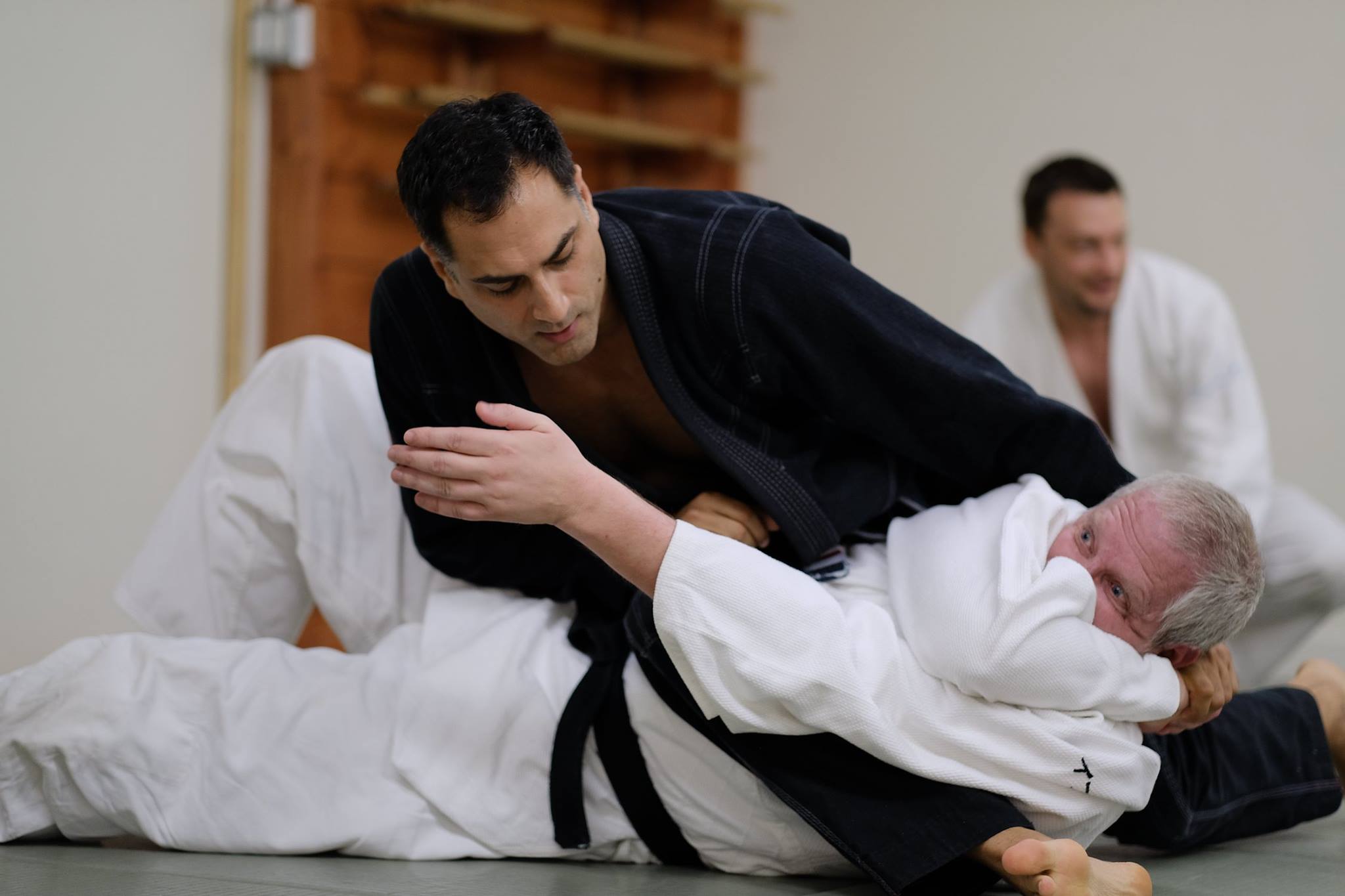
Roy shows David a surprising variation on the “gift wrap.” Wrapping the leg around uke creates a mobility deficit aikidoka would prefer not to have. However, as a professional learning insight, it was great to see and experience this variation.
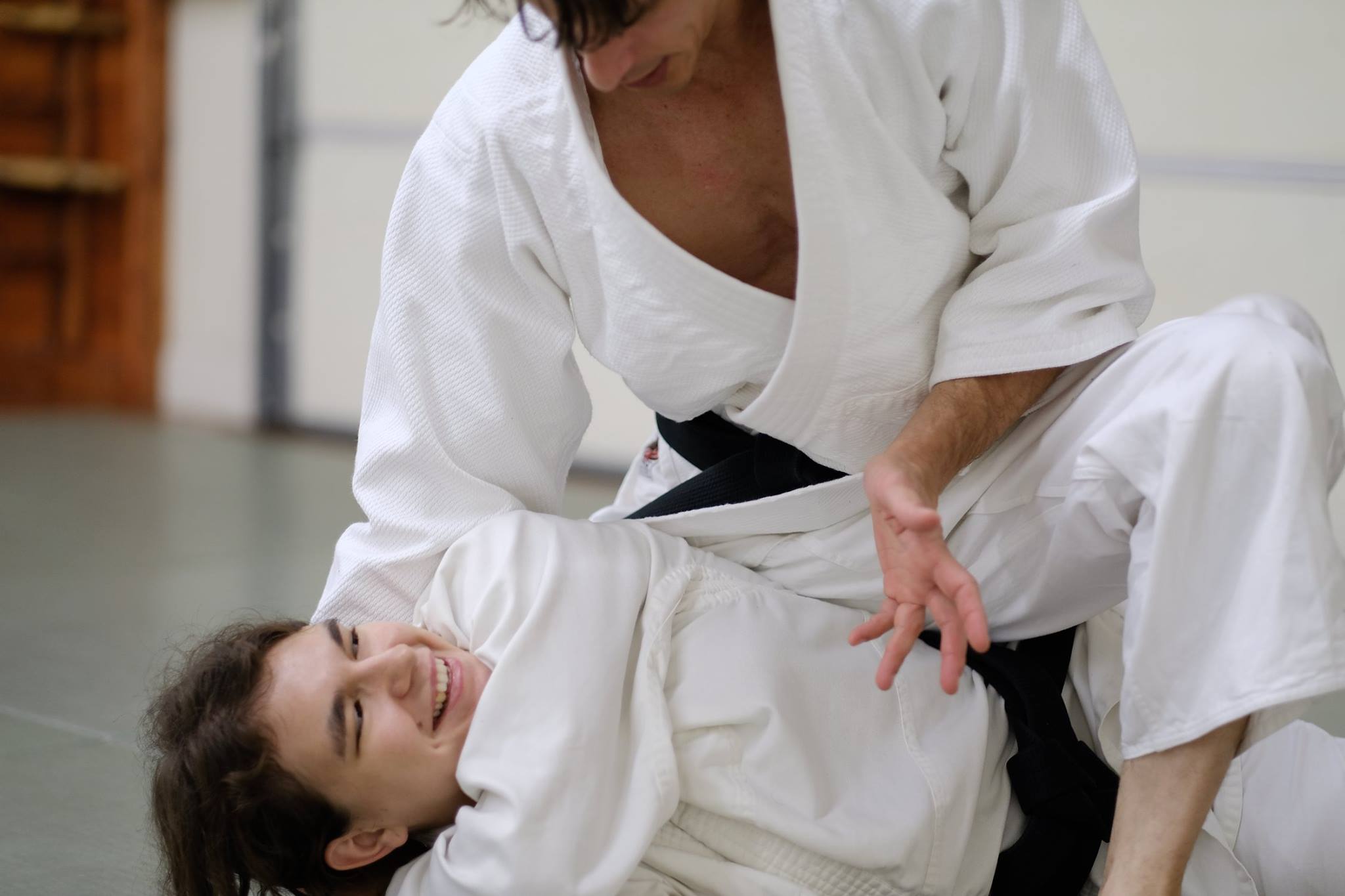
Nastia and Josh.
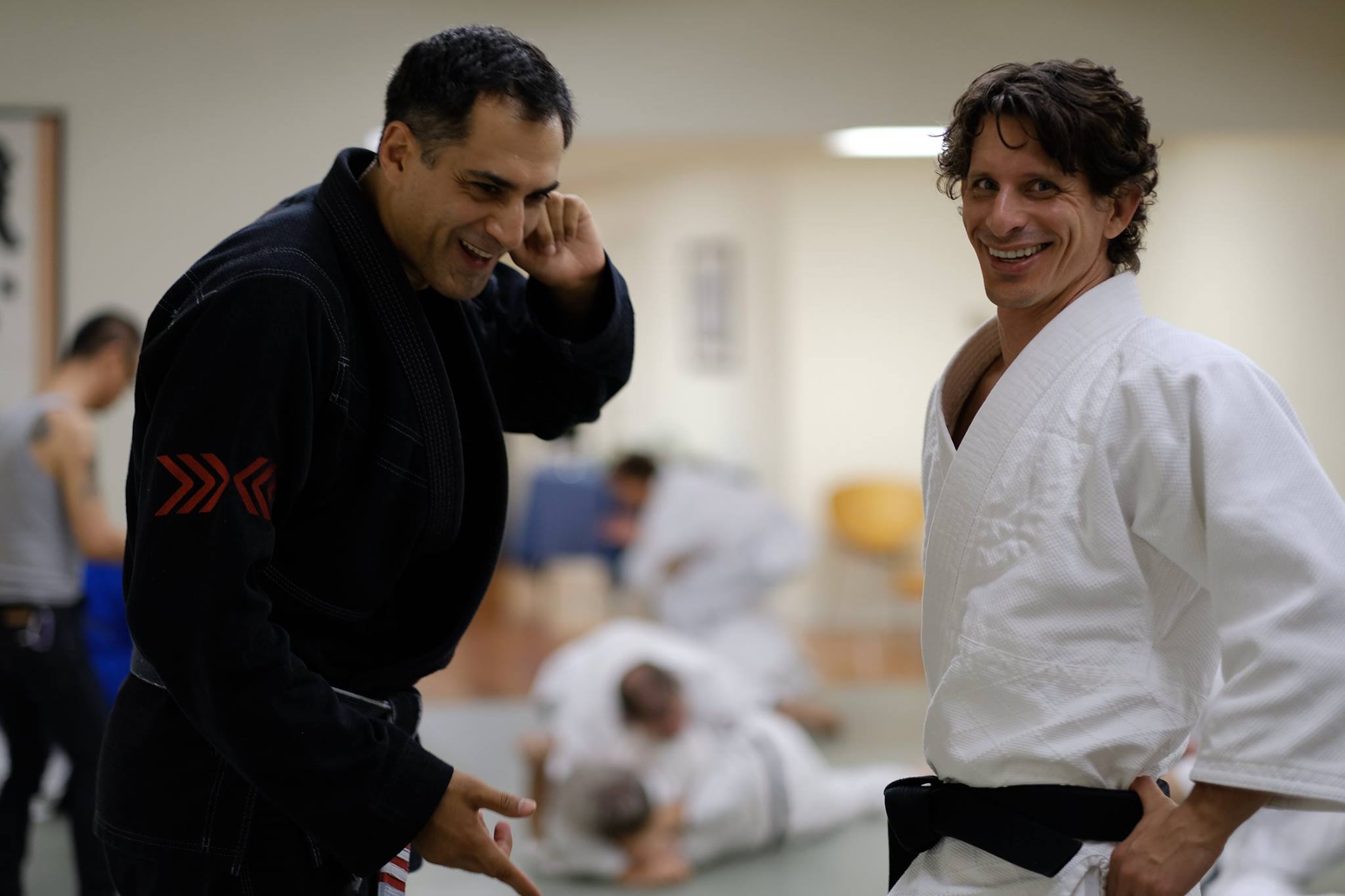
Lots of new friendships were made at the event. Roy and Josh are very thankful to have the oppourtunity to connect with so many high-level martial artists with great spirit.
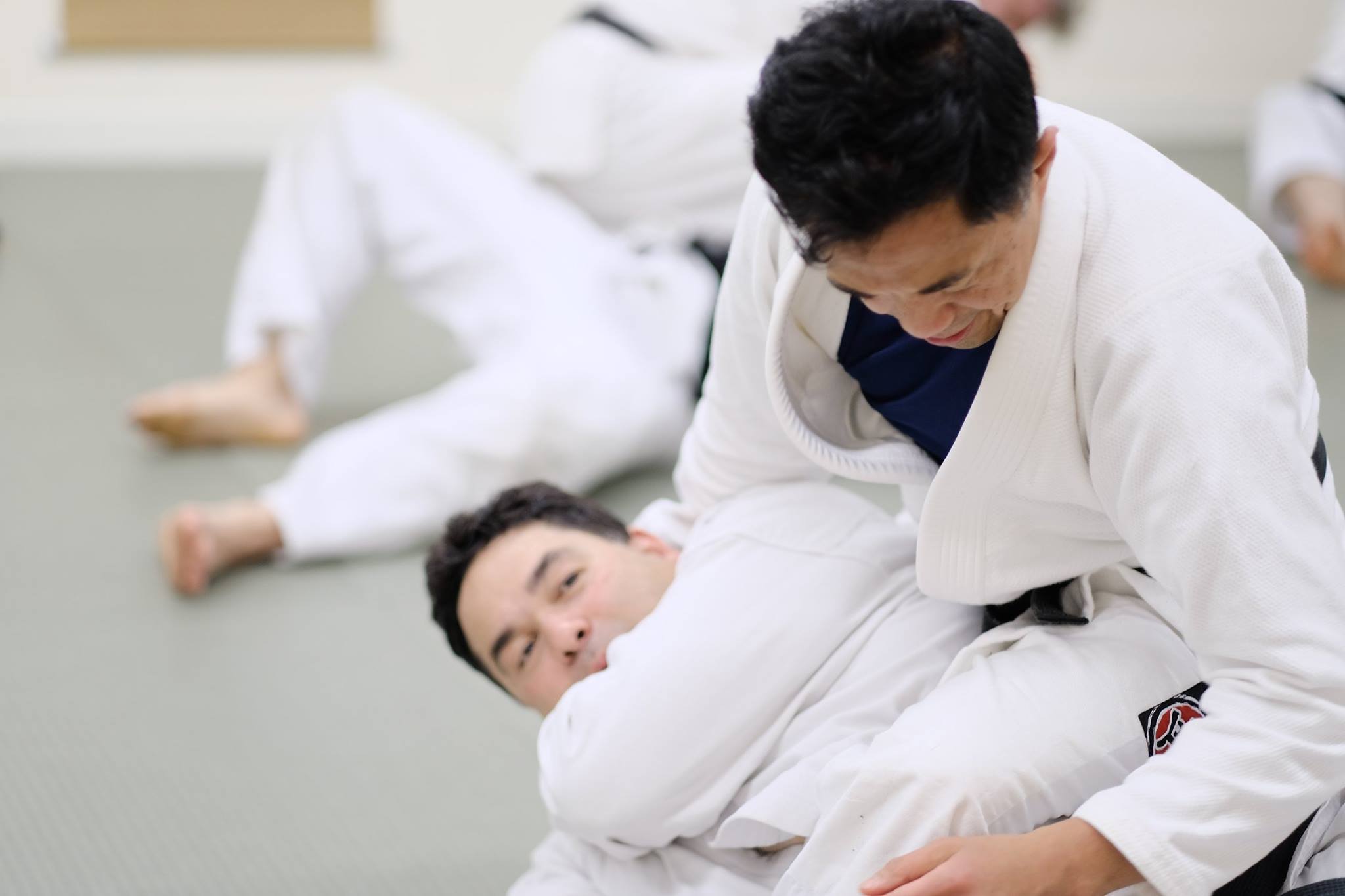
Ray and James Young, an Ikazuchi Dojo instructor with almost 25 years training experience. Before moving to Orange County, James used to practice with Ray at Pasadena Aikikai.
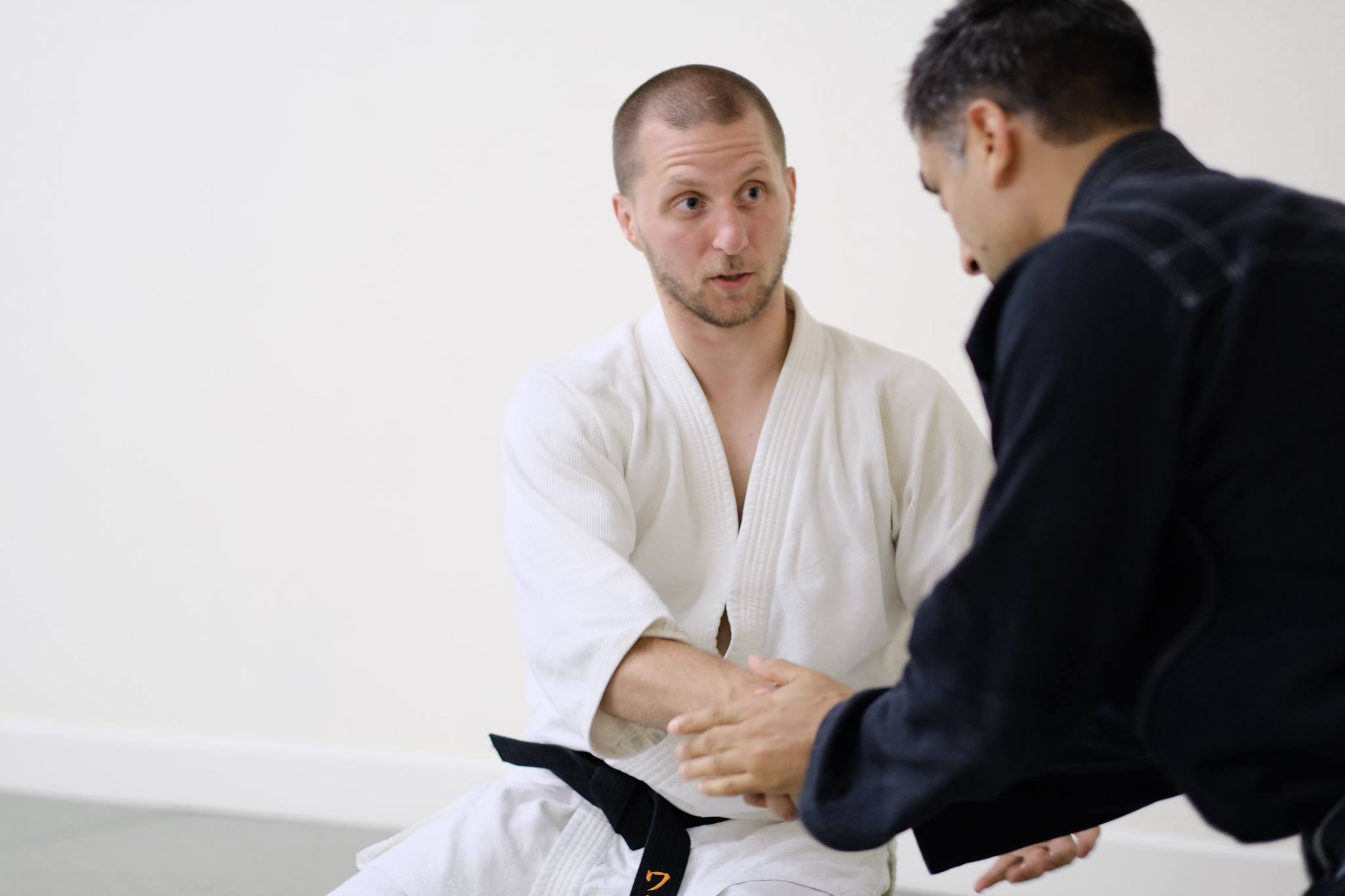
Chris getting some tips from Roy.
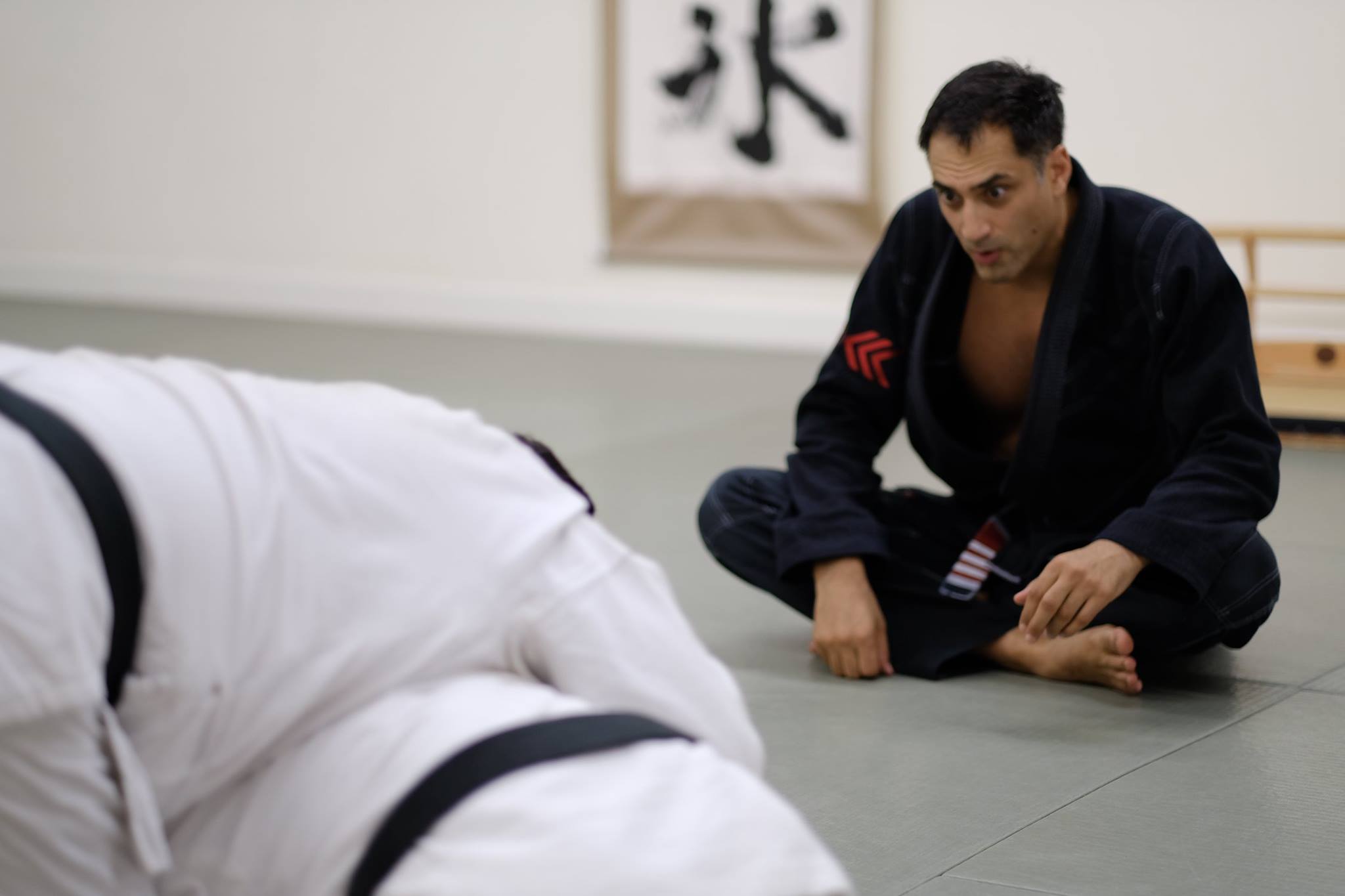
Roy, observing and reflecting as these aikido instructors begin to make new connections and assemble new techniques and responses by using their existing skill sets in slightly different ways.
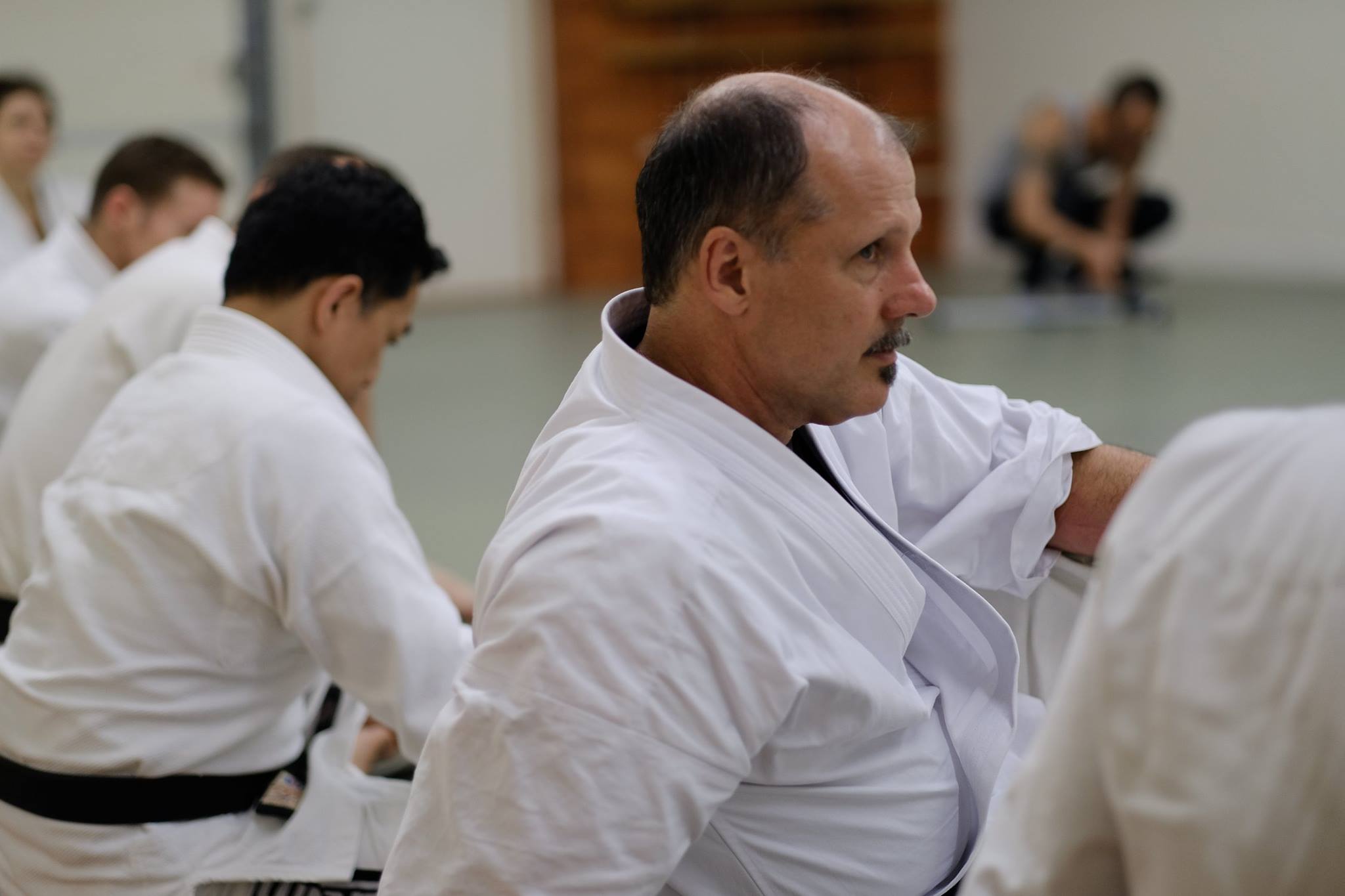
Philip Greenwood Sensei (6th dan), president of the offical organization representing the tradition of Nishio Sensei’s aikido in the US (Nishikaze Aikido Society.)

During the Q&A / Show and Tell session, Mark shares insights on training methods learned from Guro Dan Inosanto.

In a focused discussion, Raul shares insights on training methods in aikido and BJJ and talks about some of strenghts and pitfalls of typical training methods in both arts.
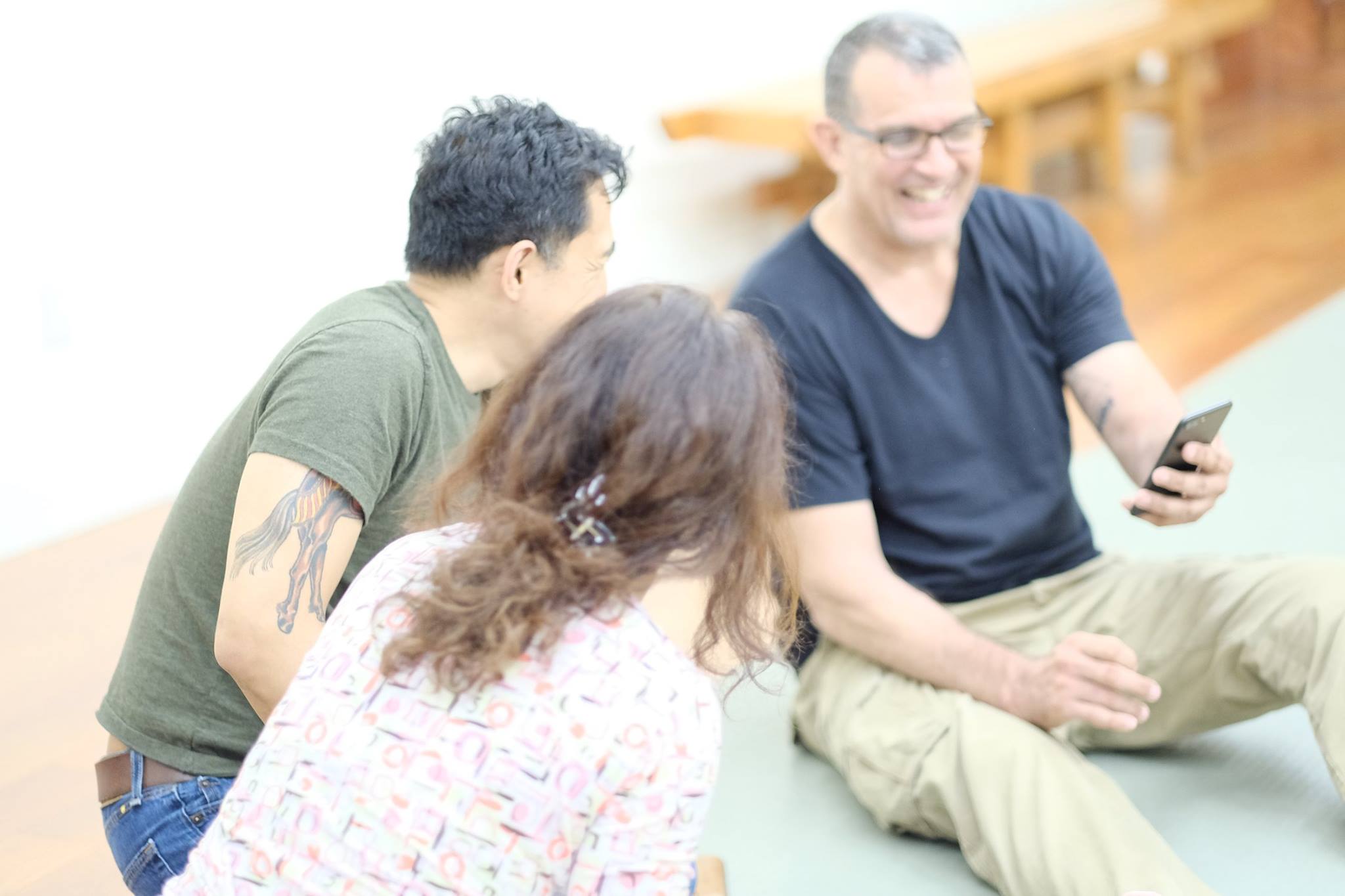
Having fun during the break before dinner. Ray and Emiko talking with Raul.
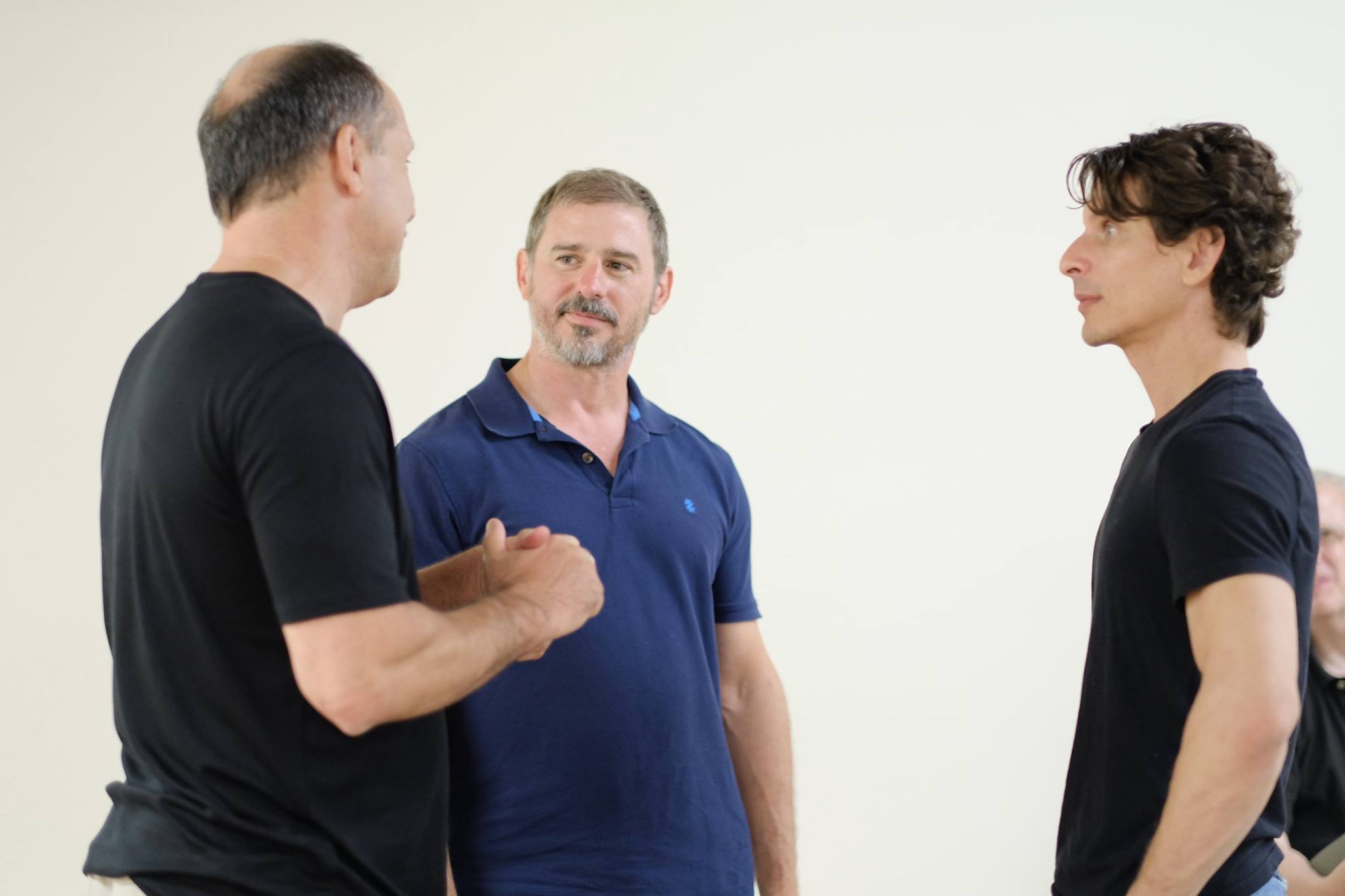
With an interest in Nishio Sensei’s aikido, we were delighted to be able to connect Brent with Philip, president of Nishio’s US organization.
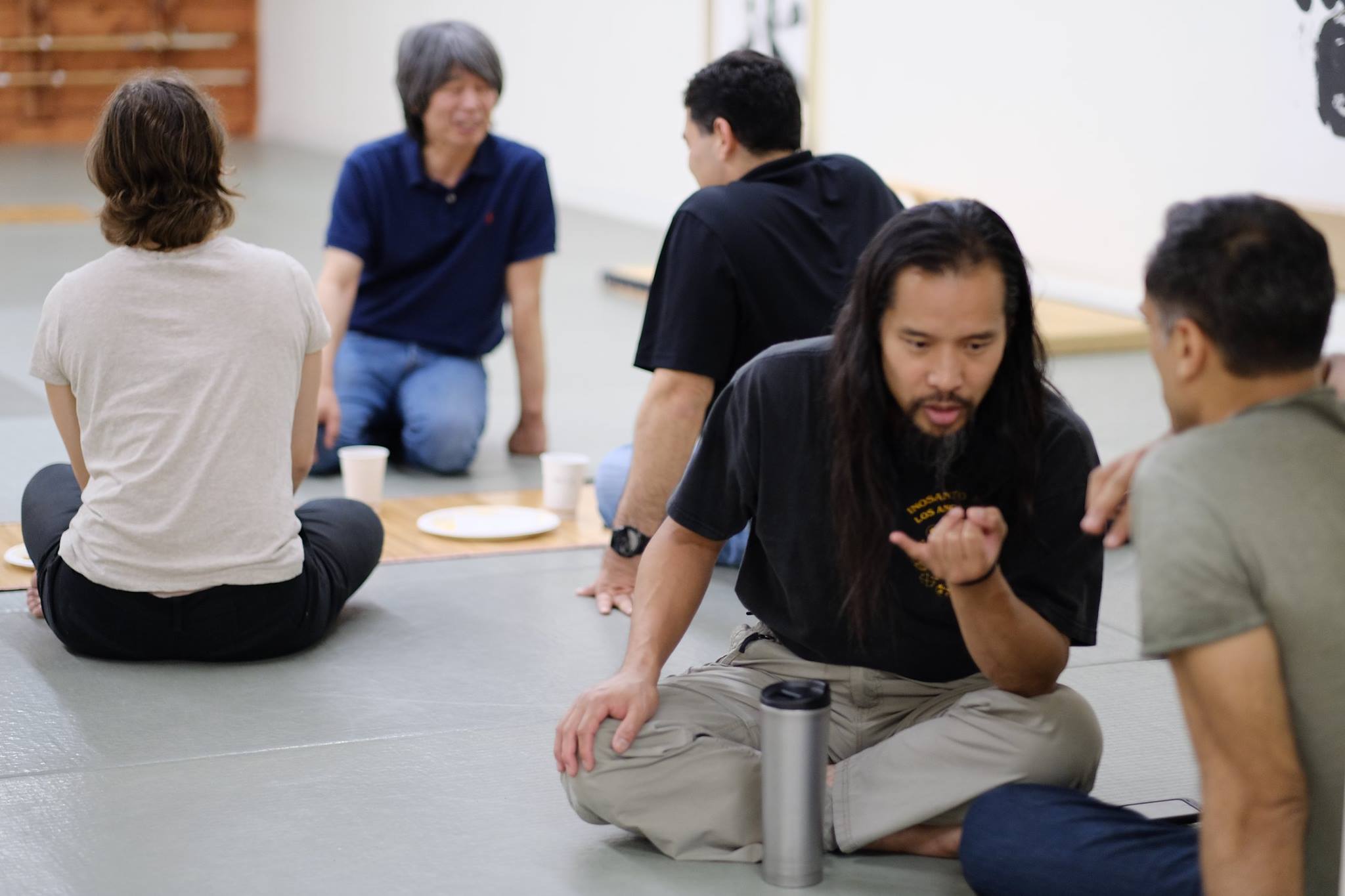
Haruo Matsuoka Sensei sharing stories with instructors during dinner.

Philip shows Josh a surprisingly effective variation on shihonage. Philip’s aikido is soft, powerful, effective, and elegant in its execution. We look forward to learning more about his insights from Nishio Sensei in the future.

New friendships forged.
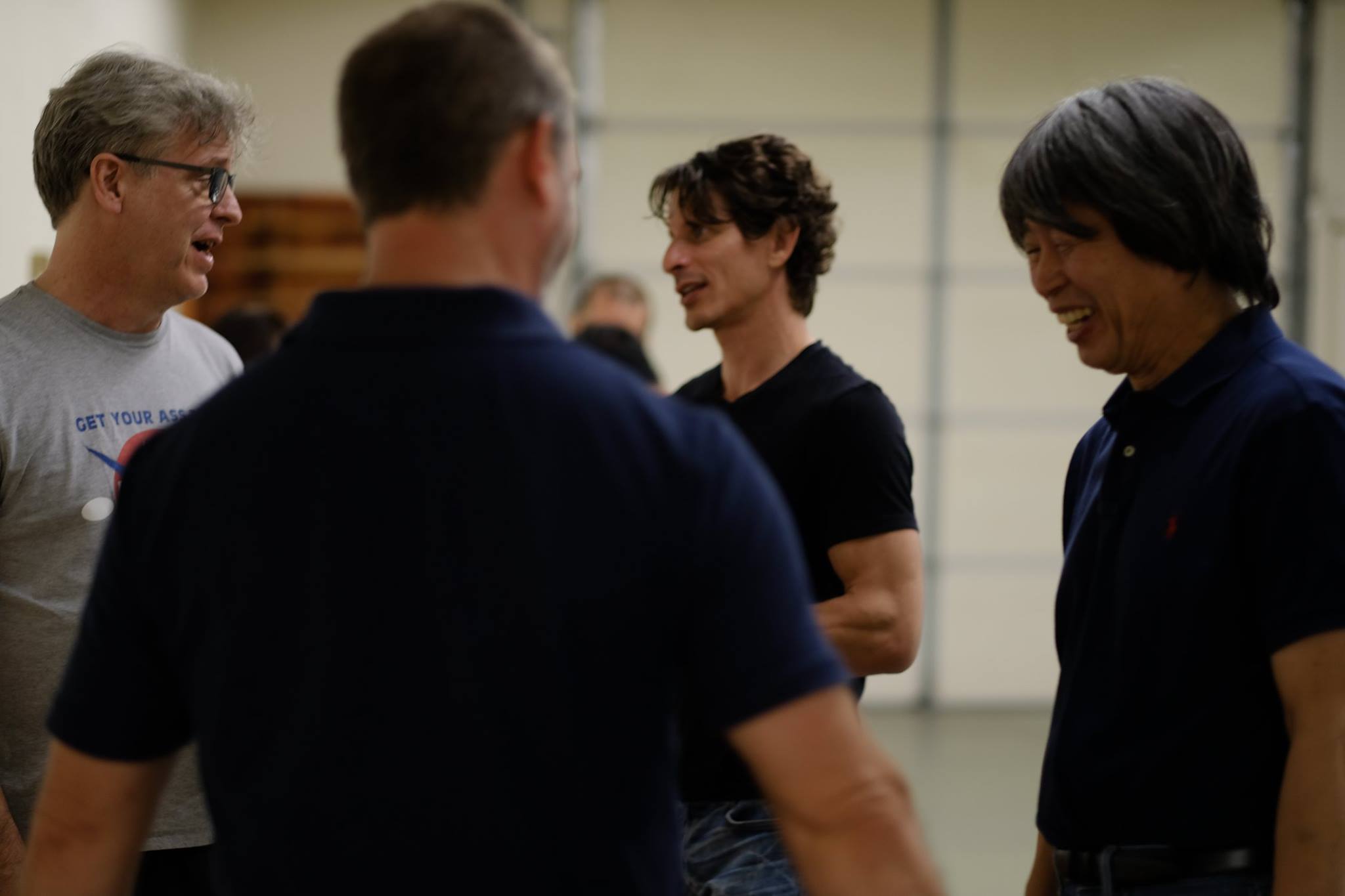
Special thanks to Haruo Matsuoka sensei for supporting the event.
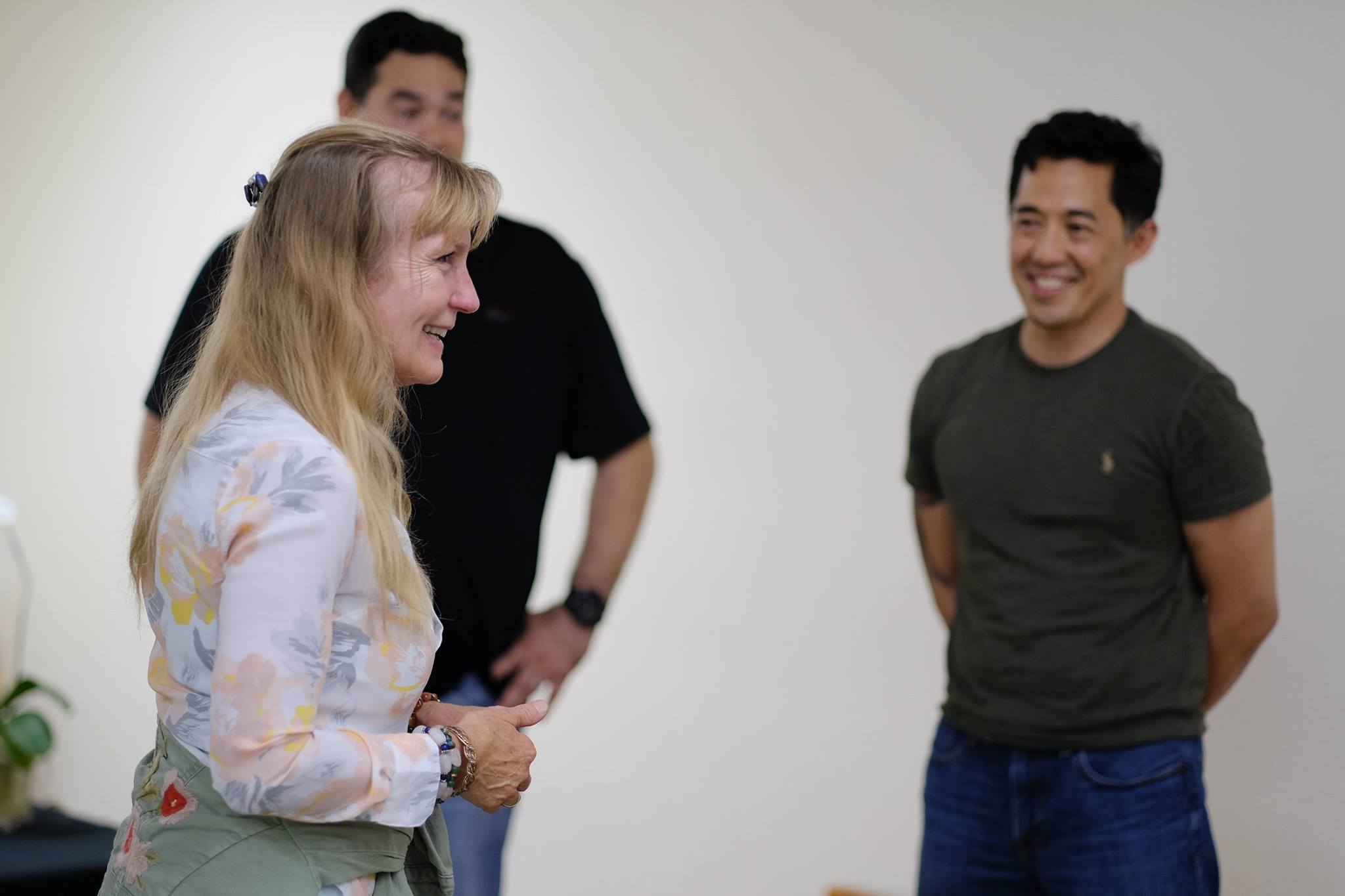
Pat Hendricks Shihan (7th dan) joins us after dinner. She expected to arrive earlier in the day but her flight was delayed.

Talking about details for an interview and demo for Aikido Journal the next day, Pat Hendricks Sensei asked if we happen to have a machete at the dojo. We didn’t but Mark Cheng had one in his arsenal. You can see the photo journal from the next day’s events with Pat Hendricks and watch her demo with the machete here.

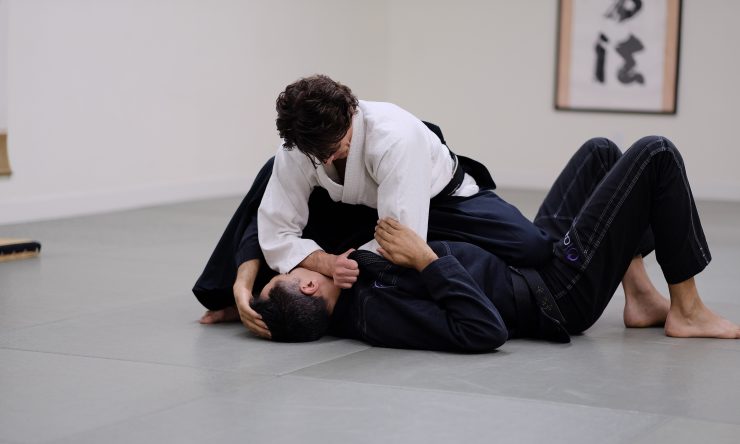



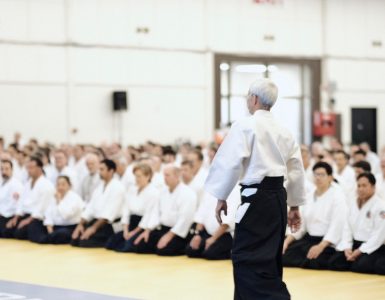







Pay close attention to the Daito Ryu videos. imo, that which distinguishes Aikido most clearly is that Aikido techniques aren’t intentionally injurious. That’s a different topic. Daito ryu has some very good pins completely omitted from Aikido. The question of principle becomes twofold. 1 – While you’re pinning one guy, what are his pals doing? 2 – Ok. Now he’s pinned, what next? Cuff him?
Chuck, what does “injurious” mean? How is atemi not injurious? Numerous sources cited by Stanley Pranin and Christopher Li show that O Sensei’s Aikido and Daito Ryu are nearly identical. The photos that Josh had show that the pins were not omitted from Aikido by O Sensei , they just were not taught by Kisshomaru or Tohei.
And the reality of a multiple attacker scenario is you either knock them out or choke them out. If you knock them out by throwing them, even better.
In a one on one scenario, if you can pin him, once he is pinned you call the police, or have someone nearby call the police.